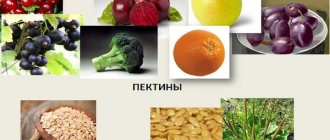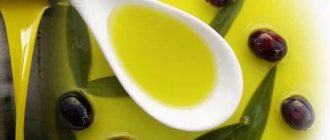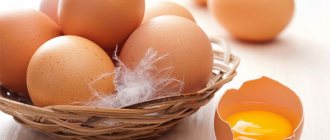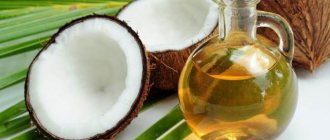The popularity of this product, which is one of the oldest cereal crops, came from the East. In many Asian countries, brown rice dishes are eaten every day. This is due to the perfectly balanced composition of the product. Today, brown rice is considered one of the best low-calorie grains around the world. In addition, according to nutritionists, this cereal contains a large amount of substances beneficial to the body. Although experts often warn about contraindications. What are the benefits and harms of brown unpolished rice? What is the chemical composition of cereal? How to cook it correctly? What recipes are there for brown rice? We'll talk about this in our article.
How is brown rice different from regular white rice?
In essence, brown and white rice cereals are the same product. Brown (or brown) rice variety differs from white rice in the processing method. Brown rice is unpolished, its grains are only peeled from the yellowish outer skin. But the bran shell remains intact, so the grains of this variety are distinguished by their brown tint and elongated shape. The peculiarities of unpolished brown rice also include the presence of an interesting nutty taste and aroma.
According to experts, this variety of cereal has more beneficial properties than its white counterpart:
- Unpolished brown rice, due to the germ and pericarp preserved in it and removed during processing, contains approximately 2-3 times more protein than white rice. Its shell contains amylose (a polysaccharide that gives the cereal friability), and the germ contains a number of fatty acids (lipids).
- In addition, this cereal is rich in dietary fiber (its volume is 12 times higher than that contained in polished rice), which helps cleanse the body and strengthen the immune system.
- The amount of microelements (zinc, copper, iodine and phosphorus) contained in unpolished brown rice is 2 times higher than in white rice.
- The product is also distinguished by its increased content of vitamins (mainly group B): the amount of vitamin B1 in brown rice exceeds its volume in its white counterpart by 6 times, and vitamin PP by 4 times.
- This cereal is rich in substances such as vitamin E, potassium, phosphorus, magnesium, zinc, and selenium.
- The advantage of the product is the absence of gluten (vegetable protein) in its composition, which provokes allergic reactions.
General information
Before considering the benefits and harms of unpolished (brown) rice, it is necessary to study all the available information about this grain. You need to pay attention to the composition, calorie content, as well as the rules for selecting and storing grains.
Differences from white rice
Brown (unpolished) rice looks the same as regular rice. They differ from each other only in a few ways. These include:
- Treatment. Before packaging, white rice is thoroughly peeled and polished. At the same time, brown cereal is practically not processed.
- Compound. Brown rice is much healthier than white rice. It contains fiber and most of the substances the body needs. White cereal goes through several stages of purification, during which it loses up to 90% of all nutrients.
- Shelf life. Cleaned grains last much longer than brown ones.
- Pest resistance. White cereals are protected from various harmful microorganisms. However, brown rice is often affected by mold.
- Cooking method. White rice is much easier to cook than brown rice. This is due to less time spent cooking the product. When cooked, brown cereal boils and loses its shape, while white cereal remains crumbly.
Composition and calorie content
Long grain brown rice is considered the most beneficial for the human body. Its chemical composition contains dozens of vitamins, as well as micro- and macroelements.
The cereal contains a large amount of the following substances:
- cellulose;
- B vitamins;
- vitamins E, K, H;
- a nicotinic acid;
- folic acid;
- copper;
- iron;
- zinc;
- magnesium;
- selenium;
- manganese;
- sodium;
- phosphorus;
- iodine.
100 g of grains contain 1.8 g of fat, 7.5 g of protein and 77.2 g of carbohydrates. An important feature of the composition of brown rice is the absence of gluten. This substance often causes allergies and other health problems.
The calorie content of the product is 363 kcal for every 100 g of rice. This is an average statistical indicator, which indicates the moderate nutritional value of the cereal and the possibility of its use in dietary nutrition.
What are the benefits of rice for humans? Beneficial properties of rice for the human body
Purchase and storage
The popularity of brown rice is gradually increasing in the world. According to this indicator, it outperformed red, black and wild cereals. Because of this, most stores and supermarkets began offering brown rice to customers. When purchasing it, you should consider the following rules:
- The grain size should be the same. The presence of short and long grains indicates poor quality of the product.
- Unscrupulous manufacturers often counterfeit brown rice. It is more expensive than white, so you can make a good profit from selling it. You can identify tinted grains by the color of the shell being too dark. For real brown rice, it should be light brown in color.
- The packaging must contain only cereals. The presence of debris and grains of a different color will indicate low quality of the product.
Unrefined cereal is a perishable product, so special attention should be paid to the method of its storage. The purchased product must be poured into a dry container with a tight-fitting lid. It is recommended to place the container in the refrigerator or any other cool place where it will not be exposed to direct sunlight. Grains absorb various flavors well, so the container should be placed separately from other food products.
Nutritional and energy value
100 grams of brown rice contains:
- proteins – 6.3 grams (25 kcal);
- fat – 4.4 grams (40 kcal);
- carbohydrates – 65.1 grams (265 kcal).
Brown rice has slightly less calories than white rice. The energy value of 100 g of brown cereal (raw) is about 331 kcal. Depending on the manufacturer, this figure may vary. For example, the energy value of 100 g of Mistral brown rice is only 341 kcal.
This indicator also changes as a result of cooking the product. The calorie content of cooked brown rice is only 110 kcal. The content of carbohydrates in 100 g of prepared product is 22.8 grams, proteins - 2.9 grams, fats - 0.9 grams. Due to the low calorie content of boiled brown rice, it is classified as a dietary product. Despite the relatively low calorie content, the boiled product is quite difficult to digest, so nutritionists recommend consuming it exclusively in the morning.
Benefits of black rice
Black rice differs in its content of beneficial microelements from other types of rice. It has much more fiber and protein. It is also useful for the presence of vitamin E and phosphorus. Why is black rice this color? The fact is that it contains a lot of a substance called anthocyanin. This microelement strengthens the walls of blood vessels well, so it should be used to prevent varicose veins.
Black rice can also have a beneficial effect on the immune system, as it contains many antioxidants that help prevent the proliferation of viruses in the body. Black rice is not so common in the diet today; it has been replaced by other types. This grass acts more as an ornamental plant.
What are the health benefits of brown rice?
The chemical composition of cereal has a positive effect on the course of metabolic processes in the body. Therefore, it is recommended to use it in the presence of the following diseases: allergies, diabetes, obesity, diseases of the cardiovascular system, as well as adherents of the idea of proper nutrition. According to nutritionists, brown rice is a real storehouse of beneficial properties:
- With its regular use, the cholesterol level in the blood is significantly reduced; the functioning of the gastrointestinal tract improves.
- According to the results of medical research, regular consumption of brown rice improves blood circulation, improves the functioning of the digestive organs, and facilitates the removal of toxins from the body.
- Eating a small portion of brown rice daily helps cleanse the walls of the intestines and stomach, as well as remove toxic substances from the body. In addition, this product relieves constipation and flatulence.
- Brown rice is often included in the diet of patients suffering from gastritis or stomach ulcers. It is recommended as one of the main components of a healthy rice diet or fasting days. Brown rice is often used as a side dish for meat or fish treats; in addition, this grain can be an excellent basis for preparing dishes such as porridge, pudding, various types of salad or pilaf.
- Due to its unique ability to absorb excess moisture, brown rice is also used as a means of restoring hydrobalance in the human body.
- The brown variety of cereal has a relaxing effect on the brain and nerve cells, so it is recommended to include it in the daily diet if there is constant mental stress or a tendency to nervous exhaustion.
- Eating brown rice helps strengthen gums and teeth, as well as improve the appearance of hair and skin.
- Regular use of the product, due to the significant content of vitamin A in its composition, improves vision, restores normal sleep patterns, and helps overcome insomnia and irritability.
Beneficial properties of brown rice for weight loss
In the process of losing weight, several nuances are important:
- Cleansing the body - removing toxins from the liver, clearing the intestines of toxins, normalizing metabolism.
- Appetite control – eating nutritious foods and deceiving hunger.
- Reducing the calorie content of foods.
- Physical training and activity.
All these points are easy to follow when eating brown rice:
- It perfectly cleanses the gastrointestinal tract, improving absorption.
- Creates a feeling of fullness for several hours, allowing you to eat less.
- Saturates the body with the necessary substances to increase endurance, energy and improve well-being.
- Removes excess fluid from the body.
- Improves skin condition, maintains muscle tone, which is important when losing extra pounds and during detox.
- Improves blood flow and stimulates the burning of fatty tissue.
By consuming brown rice as a dietary product, you can go through diets easier, without feeling unwell, lethargic and irritable.
We recommend reading:
beneficial properties of spelled cereal for weight loss
Read
Experts recommend several diet options with brown rice.
- Detox after overeating. If you drank the day before or ate a lot of heavy food, there is no need to compensate for this by fasting the next day, because the body will need strength to restore its normal state and cleanse itself. You can resort to a rice diet. It is enough to eat a small portion of rice with vegetables for breakfast and afternoon snack. This will act as a sorbent, cleanse the intestines and saturate the body with necessary elements.
- Cleansing day. Once every month or two you can do a rice fast. By giving your body a little rest from digesting heavy fats, proteins and sweets, you will cleanse your blood and intestines, restore your strength and feel lighter. On the day of the cleanse, you should only eat brown rice in small portions. It should be prepared without sugar or additives, with a small drop of high-quality vegetable oil. You can also supplement your diet with herbal infusions.
- There are also mixed diets that include brown rice. They last for 3–7 days, after which you will need to give up the product for a while. Combine brown cereal with vegetables and fruits, steamed dietary meat, eggs and beans. Cereal is introduced into different dishes: from first course to dessert, and portions are calculated taking into account the balance of used food and a reduction in the daily portion of calorie intake.
Patients with medical conditions should always consult a doctor before introducing new foods into their diet in order to take into account all individual nuances.
Video:
proper nutrition for weight loss Expand
About contraindications
Like any known food product, this type of cereal has some contraindications:
- First of all, you should know that boiled brown rice is not particularly soft. This product can cause harm to the body only if there is an excess of it (causes constipation, flatulence, bloating). Therefore, doctors recommend using it in the diet no more than 2-3 times a week. Eating brown rice is contraindicated for people suffering from severe bloating.
- It is strongly recommended not to consume brown rice for those who have difficulty urinating.
- If you have colitis, you should also refrain from consuming this product.
- Excessive consumption of brown rice, which takes a long time to digest in the stomach, can negatively affect the condition of patients with large body weight (excess weight gain is likely).
What are the benefits of rice for a child?
Rice is one of the cereals that doctors recommend first to use for feeding a newborn baby.
Rice porridge can be included in a child’s diet starting from six months. The benefits of rice for the human body will also depend on what variety it is and what kind of processing it is. Let's look at the beneficial properties of each type of rice.
Boil the product in oil
Rice (one glass) is thoroughly washed with cold water. The flowing water should be absolutely transparent. Heat a deep frying pan, pour oil into it and add rice. With constant stirring, the cereal is slightly dried. The oil should kind of envelop the rice grains, which should prevent them from sticking together. Then pour water (three glasses), stir (only once!) and leave until boiling over high heat. After the water boils, reduce the heat to low, close the lid and leave until the water is completely absorbed. Then turn off the fire, cover the pan with a lid and leave the rice to simmer for about half an hour.
How does brown rice affect the human body?
The effect of brown rice on the body depends on the frequency of its consumption. A single dose of rice porridge will not dramatically affect the athlete’s well-being. But by making this grain the basis of your diet, you will lay the foundation for a healthy diet.
Cargo has a positive effect on metabolism, the functioning of the digestive, vascular and nervous systems.
Brown rice:
- stimulates the transmission of nerve impulses. At the same time, sleep improves, stress resistance and attention increase, and depressive symptoms decrease. Its use is especially recommended for representatives of sports in which reaction speed is important (shooting at a moving target, tennis, etc.);
- stimulates blood circulation. Reduces blood cholesterol levels and thereby prevents the formation of atherosclerotic plaques. Leads to the enrichment of red blood cells with oxygen. This significantly improves the nutrition of peripheral tissues, unloading the heart muscle and leads to an increase in the athlete’s endurance (long-distance running, cycling marathons, etc.);
- normalizes the functioning of the gastrointestinal tract. On the one hand, brown rice massages the intestinal wall with fiber, increasing the strength and speed of food movement. On the other hand, it leads to the removal of undigested residues (toxins) on dietary fiber. At the same time, cargo does not increase stomach acidity;
- removes excess water from the body. This action is gentle, without leading to dehydration and diarrhea;
- keeps blood sugar levels at an acceptable level, without carbohydrate “suppositories”. Due to the mild increase in blood sugar levels, it is recommended for use in cases of carbohydrate metabolism disorders (metabolic syndrome, etc.). Suitable for nutrition for women with diabetes during pregnancy;
- promotes cell restoration. This effect leads to rejuvenation of the body, accelerating the recovery of athletes after injuries and surgical interventions;
- normalizes metabolism, accelerating it slightly. This is especially true for the nutrition of athletes watching their weight;
- softens the period of menopause;
- stimulates the immune system;
- supports the liver. This effect consists of three aspects: cleansing the liver of toxins, reducing the load on it and restoring hepatocytes with selenium included in the cargo.
Recipe without oil
One of the popular recipes for cooking brown rice uses:
- 1 cup unpolished rice;
- water (3 glasses);
- salt to taste (about 0.5 tsp).
It is prepared as follows: grains of brown rice are poured with water and left to infuse for 1 hour. Next, place a pan of water on the fire and wait for it to boil. Add rice to boiling water and salt to taste. If you want to enjoy the natural taste of the product, you can refuse salt. As soon as the mixture boils, stir the rice (only once!) and reduce the heat to low.
How long should you cook brown rice? The cereal is cooked under the open lid for 5 minutes, and then covered and cooked for another half hour. A dirty coating appears along the edge of the pan, which is considered normal. It is strongly recommended not to disturb the cereal while boiling it. Rice can be considered ready as soon as its grains swell. Next, turn off the fire and leave the cereal under the lid for 10-15 minutes.
Rice Density
If you don’t have scales at home, you can calculate how much rice cereal you need to take using data on the density of the product. This value is calculated as the ratio of body weight to the volume it occupies.
We recommend that you read the medicinal properties of the herb Mother and Stepmother
Density of rice grains at a temperature of 0°C and an atmospheric pressure of 760 mmHg. is 750 kg/m³. This value is calculated for husked rice grains. Cereal has a lower density, it is 690 kg/m³. For unrefined grains - 680 kg/m³.
Taking into account the density, it was calculated that one 200 g glass can hold 150 g of rice, and a liter jar - 750 g. Knowing the volume of other containers, you can find out how many grams of rice they will contain. A 0.5 liter jar will hold 375 g of rice grains, and a 3 liter bottle will hold 2.25 kg.
How to make pilaf from brown rice?
Brown rice pilaf is an incredibly tasty and, most importantly, healthy dish.
Ingredients:
- one glass of brown rice;
- 2.5 glasses of water;
- 4 cloves of garlic;
- one carrot;
- to taste - cilantro, salt, black pepper.
The cooking process takes about 1 hour. They work like this: pour two glasses of water into the cereal in a saucepan and bring to a boil. Reduce heat, cover with a lid and cook until the liquid is completely absorbed. The carrots are peeled, grated (medium) or chopped into small cubes. Heat oil in a frying pan and fry chopped garlic in it, add carrots, stir and add two glasses of water. Simmer until the carrots soften. Next, the stewed carrots are mixed with rice, salt and pepper. When serving, sprinkle with chopped cilantro.
What are the benefits of wild rice?
Wild rice is very similar to regular white rice. But it is much more expensive, and it also contains much more useful microelements. It is grown in swampy areas. Due to this, it absorbs many vitamins and nutrients.
Wild rice is especially beneficial for athletes because it contains a large amount of protein. For bodybuilders, this is an indispensable cereal. It can be included in your weekly diet to replenish nutrients to your muscles. This causes their rapid growth. At the same time, wild rice is practically free of fats and harmful cholesterol.
This type of cereal differs in that it needs to be prepared somewhat differently. Before cooking, you need to let it sit for about an hour in warm water. This is necessary for the protective peel to soften. If this procedure is not done, the rice will be hard and will not cook completely. After soaking, it will need to be cooked for about an hour.
Another pilaf recipe (with carrots and pistachios)
Brown rice pilaf prepared according to this recipe is a sweet, low-fat, incredibly tasty dish that even those who zealously watch their figure can enjoy without fear. The calorie content of one serving of the treat is only 256 kcal. To prepare four servings, use the following products:
- one head of onion;
- one carrot;
- 180 grams brown rice (Indica BROWN grain is ideal);
- 1 tsp. olive oil;
- 1 tsp. lemon zest;
- 380 ml chicken broth;
- 125 ml water;
- 1 tsp. lemon juice;
- 50 grams of dates (pitted);
- green onion;
- black pepper.
The dish is prepared over an hour: the carrots and onions are chopped and sautéed in olive oil over medium heat for one minute with occasional stirring. Add rice and sauté for another minute. After this, add dates (chopped), lemon zest, water and broth. Glove Bring to a boil and reduce heat. Cover with a lid and cook for about 45 minutes until all the liquid has completely evaporated. Stir the finished dish with a fork and add a little lemon juice. Serve the treat sprinkled with chopped green onions.
How to cook brown rice: recipes
To avoid harmful effects on the body and get a tasty dish with a pleasant and unique aroma, brown rice must be properly processed.
- First, the rice is soaked for several hours, maybe overnight, but 6 hours will be enough. This is done so that the rice softens and swells, then it will cook faster and have a more delicate taste. But, in addition, it is necessary to soak the product so that toxic substances are released. In small quantities they are not harmful to the body, but large concentrations can cause symptoms of poisoning.
- After soaking, the rice is washed again with running water and put on fire. After boiling, you need to simmer the cereal for about 10 minutes, then drain the water again and rinse the rice from the kettle.
- Then the porridge is poured again and cooked for about 20–35 minutes until cooked. The drained rice is wrapped in foil or a towel directly in the pan and allowed to cook. Only after this can butter and other fillers be added to the cereal. Salt, sugar and spices can be added during the cooking process so that the grains are nourished from the inside.
The process seems painstaking, but in fact there is nothing intimidating about it, and the result gives pleasure to even the most selective gourmets.
Since brown rice came to us from Asian cuisine, you can find a lot of recipes for its preparation with seafood, exotic berries and fruits, as well as herbs. It goes well with cinnamon, star anise, cardamom, and also harmonizes perfectly with garlic, different types of onions, aromatic vegetables such as carrots, bell peppers and even celery.
In dietary dishes, to increase nutritional value, it is often prepared with vegetables and beans or meat products, as well as mushrooms:
- corn, peas, nuts, beans or soybeans;
- tuna, shrimp or crab, mussels;
- oyster mushrooms and other types of mushrooms;
- chicken, lamb.
It goes well with eggs and cottage cheese. True, tofu is often used with brown rice. In addition, pieces of steamed or fresh fruits and berries, dried fruits, honey or maple syrup, and all types of nuts are often added to rice.
You can cook porridge with milk; for dietary purposes, coconut or almond products are usually chosen, but animal fats and calcium are important for children, so cow’s milk is used.
Often, fresh salads based on lettuce, spinach, arugula, various varieties of cabbage, tomatoes, daikon or turnips are added to a side dish of brown rice. It is not customary to use such rice in fillings for pies or cabbage rolls, but stuffing squid with it would come in handy.
To prepare a dietary cocktail, take Greek yogurt, pieces of fruit, such as apples, peaches, plums, grapes, strawberries, add a little boiled brown rice, honey or sugar and beat in a blender. To make the cocktail more filling, you can add nuts and protein powder. This breakfast mixture gives you lightness, vigor and a boost of strength for the whole working day, and also does not complicate physical training.
We recommend reading:
how to cook quinoa: recipes
Read
Ideas for hearty main dishes with brown rice
Asian pilaf is ideal: rice is stewed with pieces of chicken or seafood, adding carrots, celery, garlic and soy sauce. You can also make honey mustard gravy. Tomatoes, bell peppers and hot peppers are added to roasts with lamb or beef. A mushroom appetizer usually comes with a lot of onions and seasoning to taste. Rice with fish is accompanied by carrots and sprinkled with lemon juice.
To prepare a hot appetizer, the rice must first be boiled without salt, and then simmered with meat and vegetables, introducing the ingredients in the correct order: meat first, then tough vegetables, then porridge and spices, sauce.
For an ordinary side dish with vegetables, it is enough to simmer green beans or peas, leeks, peppers and other favorite ingredients in a small amount of oil, add rice and season with soy sauce, lemon juice and herbs. Diet rice is not fried; steamed pieces of vegetables are added to it and sprinkled with a drop of cold-pressed vegetable oil.
You can prepare a delicious rice omelette by frying vegetables and mushrooms, adding porridge and pouring beaten eggs over the dish.
Video:
how to cook brown rice correctly Expand
Recipe for pilaf with fried chicken breast
Fluffy brown rice with spices, garlic, tomatoes and fried chicken has a great flavor profile. A green salad with lemon is an ideal addition to it. Product composition:
- two chicken breasts;
- 200 grams of brown rice (“Indica Brown”);
- 600 ml broth (vegetable, chicken) or water;
- 100 grams of cherry tomatoes (ordinary ones are possible);
- 50 grams of raisins;
- 25 grams of pine nuts;
- two cloves of garlic;
- one head of onion;
- 3 tbsp. l. vegetable oil;
- 1 tbsp. l. curry (mild powder);
- half a bunch of cilantro;
- 1 tsp. salt;
- for serving - lemon.
From the presented quantity of products you can prepare 6 servings of the dish.
The benefits and harms of brown rice: effects on the body
Brown rice (aka brown) is a good source of nutrients. Whole grains are rich in fiber, which may reduce cardiovascular disease and the risks for certain types of cancer, as well as promote good digestion and a healthy weight. Brown rice contains essential minerals including magnesium, iron, selenium, calcium, potassium, phosphorus and manganese, as well as biological phytonutrients such as lignans, phytoestrogens and phenolic compounds. Additionally, brown rice is a gluten-free food that contains no trans fat or cholesterol and only minimal amounts of fat and sodium.
Incorporating brown rice into your diet provides enormous health benefits.
- Diabetes. Brown rice is good for people with diabetes and hyperglycemia. It has a low glycemic index, which can help lower insulin and stabilize blood sugar levels. It is rich in phytic acid, fiber and essential polyphenols. It is a complex carbohydrate that helps in the slow release of sugars compared to white rice.
- Obesity. Brown rice plays an important role for people who are constantly trying to get rid of extra pounds. It contains manganese, which helps synthesize fats. Studies have shown that consuming whole grains in the form of brown rice has a positive effect on the body in terms of reducing body mass index and body fat.
- Antidepressant. Sprouted brown rice has antidepressant properties and helps combat anxiety-related disorders. An investigative study suggested that sprouted brown rice contains essential amino acids such as glutamine, glycerol and GABA. These inhibitory neurotransmitters ease impulses in the brain associated with anxiety, depression and stress, resulting in a relaxed state.
- Insomnia. Brown rice is beneficial in treating insomnia. It is a natural source of the sleep hormone melatonin. It improves sleep quality by relaxing the nerves and increasing the sleep cycle.
- Strong immune system. This cereal product provides our body with a significant amount of vitamins, minerals and essential components of phenolic compounds, which help stimulate the body's immune system. It nourishes the body, speeds up healing and increases the ability to fight infections.
- Skeletal health. The grain is beneficial in maintaining bone health. It is rich in magnesium, which, along with calcium, provides bones with their physical structure. Magnesium, which brown rice contains, prevents bone demineralization and is beneficial in preventing arthritis and osteoporosis.
Brown rice is rich in folate, which is extremely important during pregnancy for healthy fetal growth. Small portions of brown rice are also recommended for patients suffering from fungal infection.
Brown rice, the benefit of which lies not only in microelements, contains many useful vitamins: B1 (thiamine), vitamin B2 (riboflavin), vitamin B3 (niacin), vitamin B6, folic acid, vitamin E (alpha tocopherol) and Vitamin K. Cereals are a source of protein and add a good amount of fiber content to our diet.
Step-by-step preparation
The dish is prepared for 1 hour:
- First, prepare the (vegetable) broth: wash and peel the vegetables (stem celery, carrots and onions). Add bay leaf, black peppercorns and cilantro. Boil the broth until done.
- Measure out the rice. It is better to use the long-grain Indica Brown variety, which is carefully ground, preserving the grain germ and shell.
- Chicken breast fillet is cut crosswise into strips. Mix with 1 tbsp. l. vegetable oil, half the available garlic (chopped) and curry and marinate.
- Peel and chop the onion. Heat the oil (vegetable) in a deep frying pan, add the onion and garlic (remaining) there, then cook for about three more minutes.
- Add rice, sprinkle the remaining curry over the dish and mix well.
- Pour broth (hot) into the cereal. The proportion should be: 1:2.5. Add salt (1 tsp) and raisins. Cover with a lid and cook for about 25 minutes.
- Roast nuts (pine nuts). Chop the tomatoes and cilantro and add them to the finished cereal. Stir and heat for five minutes.
- Fry chicken breasts (pre-cut into strips).
- Fluff the rice with a fork, sprinkle with nuts and place fried chicken strips on top. Serve with a slice of lemon.
Chemical composition and calorie content of the product per 100 grams
Brown rice is a whole grain without the husk. It has a lot of minerals and vitamins and also contains a lot of fiber.
Nutritional value per 100 g:
| Name | Weight |
| Calorie content | 548 kJ (370 kcal) |
| Carbohydrates | 77.24 g |
| Sugar | 0.85 g |
| Alimentary fiber | 3.52 g |
| Fat | 2.92 g |
| Protein | 7.85 g |
| Thiamine (B1) | 0.401 mg |
| Riboflavin (B2) | 0.093 mg |
| Niacin (B3) | 5.091 mg |
| Pantothenic acid (B5) | 1.493 mg |
| Vitamin B6 | 0.509 mg |
| Folate (B9) | 20 mcg |
| Calcium | 23 mg |
| Iron | 1.47 mg |
| Magnesium | 143 mg |
| Manganese | 3.743 mg |
| Phosphorus | 333 mg |
| Potassium | 223 mg |
| Selenium | 23.4 mcg |
| Sodium | 7 mg |
| Zinc | 2.02 mg |
| Water | 10.37 g |
Brown rice with vegetables and seeds
We invite you to get acquainted with another popular recipe. The dish created from it can be used as a tasty and healthy side dish, in which many eaters, among other things, are attracted by the spicy crunch of the seeds. To prepare four servings use:
- one glass of brown rice;
- two heads of onions;
- 300-400 grams of vegetables (any);
- 5 tbsp. l. butter;
- half a glass of sunflower seeds;
- pepper and salt.
The dish is prepared within forty minutes: the rice is boiled separately in salted water for half an hour. The onion is cut into small cubes or half rings and fried in oil (butter) until transparent. Add the seeds to the onion and continue to fry for about two to three minutes with constant stirring. Vegetables (zucchini, peppers, pumpkin, tomatoes) chopped into cubes are also added there. Fry until done for 5-7 minutes. Add rice, mix thoroughly, salt and pepper. Close with a lid and bring to readiness over low heat for about 5-7 minutes. The finished dish is decorated with chopped herbs.
Traditional medicine recipes based on brown rice
Brown rice grains are a healthy grain for preventing the development of many health problems. In what cases are the properties of the product used for treatment:
General body cleansing
Brown rice is great for cleansing the human body. The infusion is prepared as follows.
- You need to add 100 grams of rice to one liter of water.
- After this, the composition, previously closed with a lid, must be placed on low heat for 40 minutes.
- Next, the broth must be filtered and cooled.
You need to take one third of a glass once a day. The procedure is carried out over 10 days. The medicine will normalize metabolism and remove toxins from the body. At the same time, it improves blood composition and liver performance.
To remove salt deposits in joints
Rice cereal is used to regulate metabolism in the body. With its help, excess salts are removed from the joints, and bone tissue is protected from arthrosis and arthritis.
The infusion is prepared as follows:
- Take brown rice and put it in 5 glasses with two spoons for each.
- The rice is poured with cold water, and the glasses are put away in a dark place.
- After a day, the water is drained and fresh water is added. This procedure is carried out over 5 days.
- On day 6, rice from the first glass is boiled and eaten. New rice is poured into the first glass and filled with fresh water.
- The next day, a similar procedure is carried out with rice from the next glass.
According to this scheme, it is necessary to take the beneficial composition for 40 days. During this period, you need to drink a lot of water and eat vegetables. This will help restore potassium in the body. The infusion is consumed in the morning. You will be able to eat only after four hours.
You need to know that rice has a serious effect on the human body, so a cleansing course can be carried out no more than once every 12 months.
Safety and harm
Brown rice is completely safe for most people when consumed in reasonable amounts.
With unlimited intake, excessive deposition of subcutaneous fat is possible (due to its high energy value).
Also, in rare cases, rice can be harmful to health and lead to the following side effects:
- Renal dysfunction. The product is rich in potassium and phosphorus. When the excretory function of organs is impaired, these minerals begin to accumulate in the blood, which can be dangerous for the health of the heart and mucous membranes of the gastrointestinal tract.
- Arsenic poisoning. Many varieties of rice contain significant amounts of this metal (for poisoning you need to eat about 5-7 kg of the product at a time). It is recommended to give preference to rice grown in Pakistan or India.
- Dyspeptic disorders. Excessive intake of dietary fiber can, on the contrary, disrupt the activity of the gastrointestinal tract, which will manifest itself in the form of stool disorders (constipation or diarrhea), nausea, bloating, and increased gas removal.
- Allergic reactions . They are rare and can be either local or systemic in nature. It is strictly forbidden to consume brown rice if you have a history of allergies to any type of rice.
Due to the presence of contraindications and the risk of side effects, it is recommended to intelligently approach the inclusion of brown rice in the diet.
Selection and storage of rice
Try to purchase whole grain brown rice whenever possible as it contains more fiber, vitamins and minerals. The bran is still present in the product and the grains are not damaged. Which white rice is healthier? It is best to opt for steamed long-grain varieties. Avoid instant grains whenever possible, as they lack some of the nutrients.
Store white rice in an airtight container in a cool, dry place. At a temperature of 15°C or lower, cereals can be stored for ten years or more. Brown rice can be stored for about six months in a cool, dry place, but if you put it in the freezer it will keep for about a year.
Once you have cooked the rice, store it in the refrigerator and use it within three to four days. You will know that the product has gone bad if it becomes hard and dry or has an unpleasant odor. It should not be eaten.
Possible harm
Negative reactions appear when consuming excess cereal. Some diets recommend consuming this type of grain all the time, which is strongly discouraged.
Frequent consumption of brown rice during a diet provokes problems with the gastrointestinal tract: bloating and constipation. Overeating provokes urolithiasis, vascular pathologies, and atherosclerosis. The substances contained may cause allergic reactions.
It is important to follow the storage rules for brown rice to maintain its benefits. An open package of cereals is hermetically sealed using an adhesive valve on the package or poured into a special container for storage. Store in a dark, dry place and do not consume after the expiration date.
The benefits and harms of brown rice depend on the individual characteristics of the body. Before use, you should consult a nutritionist to avoid negative consequences.
Brown rice increases serotonin levels in the body and helps fight depression
Brown rice is rich in healthy carbohydrates that stimulate the production of serotonin in the brain. In addition, it contains other substances that enhance the effect produced by carbohydrates. First of all, we should mention folic acid, which actively participates in the activity of brain cells, helps relieve stress, improve concentration and mood. In addition, vitamins B1 and B3 and some minerals contained in brown rice stimulate brain activity.











